|
|
Reply #1 SONofODIN's post
comeynye..parrot ni sama laa ngan burung kakak tua kan son?
ni msti makin besar kan? bulu cantik berkilat |
|
|
|
|
|
|
|
|
|
|
|
Description: general plumage green; head greyish-blue, brighter blue toforehead and crown; breast and abdomen greyish-olive; thighs and undertail-coverts greenish-yellow with bluish tips; back blue-black witheach feather edged greenish-grey; lower back and upper tail-covertsdeep blue; sides of body, under wing-coverts and bend of wing red;
outermost lesser wing-coverts brownish-red; wings and greater
wing-covertsdark green; secondaries and wing-coverts with greenish-yellow edging;tail-feathers upperside greenish-yellow, underside yellow; uppermandible red, lower mandible brown-blackish; iris pale yellow; feetgrey.
Female as male, but with brown head; ear-coverts tingedolive-yellow; back, lower back and upper tail-coverts green; bluishpatch to lower back; breast and abdomen yellowish-green; outer underwing-coverts green; upper and lower mandible brown-blackish.
Immaturesas female, but with green head; young males usually with bluish tingeto forehead; under wing-coverts partially red; iris greyish-yellow.
Length: 18 cm (7 ins), wing length 110 - 126 mm (4 - 5 ins).
Distribution:southern Burma and southeast Thailand south across Malaysia toSingapore; Sumatra, Borneo as well as island of Bangha and Riau Islands.
Habitat:all types of lowland forest, partially wooded areas, mangroves, tallsecondary vegetation and cleared areas with isolated groups of trees to1,000 m (3,300 ft); occasionally also to 1,300 m (4,300 ft) as well ascultivated areas and oil-palm plantations.
Status: generally found throughout, however not common; in localities endangered through habitat destruction.
Habits:in pairs or small groups of up to 15 birds outside breeding season;occasionally larger gatherings on feeding trees; at end of breedingseason young birds gather together in sometimes large flocks, which cancause considerable damage to oil-palm plantations when feeding; quietand cautious when feeding; difficult to detect as plumage providesexcellent camouflage in foliage; also forages on ground; moves slowlyand cautiously in branches; however flight swift and direct;accompanied by loud calling; can often be observed playing duringflight; groups circle above treetops, then land briefly before flyingup again; this movement accompanied by loud whistling; nomadic;probably also seasonal migrations in localities; loud call sharptschi-tschi-tschi-and tschiu-i-Rufe, more melodic and fluting soundwhen resting.
Natural diet: fruits (ripe and unripe oil-palm fruit), figs, flowers and seeds.
Breedingbehaviour: breeding season in Malaysia from February to May and onBorneo from June to September; nests mainly in tall trees; clutch 2 to3 eggs; female broods alone; no further information available; eggmeasures 24.2 x 20.0 mm (0.95 x 0.79 ins).
Aviculture: quietparrot with pleasant character; seldom noisy; initially shy andfearful; however soon becomes tame, taking food from hand; prefersclimbing to flying; noticeably slow and cautious movements; remainsmotionless when alarmed; if danger approaches nearer then flies up inpanic; risk of injury through striking hard against mesh; newlyimported birds very susceptible and difficult to acclimatise; offspringbred in aviculture hardy; enjoys bathing or being sprayed; colonysystem only possible in very spacious flight; over-crowding causesstress symptoms; outside breeding season birds remain apart; even pairsdo not perch together; very hard chewer; insufficient supply of woodfor chewing can lead to bill over-growing.
Accommodation: aviary2 x 1 x 2 m (6 x 3 x 6 ft) or very spacious birdroom cage; allow 2 sq.metres (22 sq. ft) per pair in colony system; not less than 24癈 (75癋)initially for newly imported birds; ensure aviary has sufficientclimbing opportunity.
Diet: plenty of fruit (figs, mango,apples, ripe and unripe banana); berries (rose-hip, rowan, pyracanthus,hawthorn); vegetables (carrot, half-ripe maize, cucumber, tomato) andgreenfood (chickweed, dandelion); seed mix of millet, canary grassseed, oats, safflower, buckwheat and wheat; also provide sprouted;millet spray.
Breeding in aviculture: only occasionallyachieved; harmonious pair essential; housing in pairs advantageous asbroody female can be aggressive; will defend nestbox and immediatesurroundings vehemently; fluting song from both partners duringbreeding; nestbox 15 x 15 x 40 cm (6 x 6 x 16 ins); entrance hole 5 cm(2 ins) in diameter; during courtship male spreads tail regularly;clutch 2 to 3 eggs; incubation 23 days; fledging period 35 to 36 days. |
Rate
-
1
View Rating Log
-
|
|
|
|
|
|
|
|
|
|
|
Originally posted by SONofODIN at 22-7-2008 09:03 AM 
Baru beli satu lagi.
http://i294.photobucket.com/albums/mm97/Puniabo/DSC_0181.jpg
cantiknyerrrr... baper u beli nih? |
|
|
|
|
|
|
|
|
|
|
|
cantikkk...saya pon peggemar parrots... |
|
|
|
|
|
|
|
|
|
|
|
minta jg nak bela..tp mahal sgt..
burung ni blh membiak tak..? |
|
|
|
|
|
|
|
|
|
|
|
cam jinak je burung2 kat atas....pandai tuan dia jaga |
|
|
|
|
|
|
|
|
|
|
|
parrot dgn macaw lain kan?
tempoh hayat dia panjang tak?
yg 150 tu harga parrot ke serindit |
|
|
|
|
|
|
|
|
|
|
|
Terdapat lebih drpd 100 jenis species dan sub species parrot. Macaw adalah salah satu drpd species parrot.
Hayat Macaw lebih drpd 50 tahun. Serindit baru RM18 saje. Macaw dari RM8,000 ke RM16,000. |
|
|
|
|
|
|
|
|
|
|
|
Reply #15 SONofODIN's post
mahalnyerr macaw! tp cantikk sgt sgt! tp cantikk sgt sgt!
 |
|
|
|
|
|
|
|
|
|
|
|
Macaw antara parrot yg paling bising. Tapi yg paling popular di kalangan parrot lovers dan yg paling mahal.
Gambar2 terbaru.
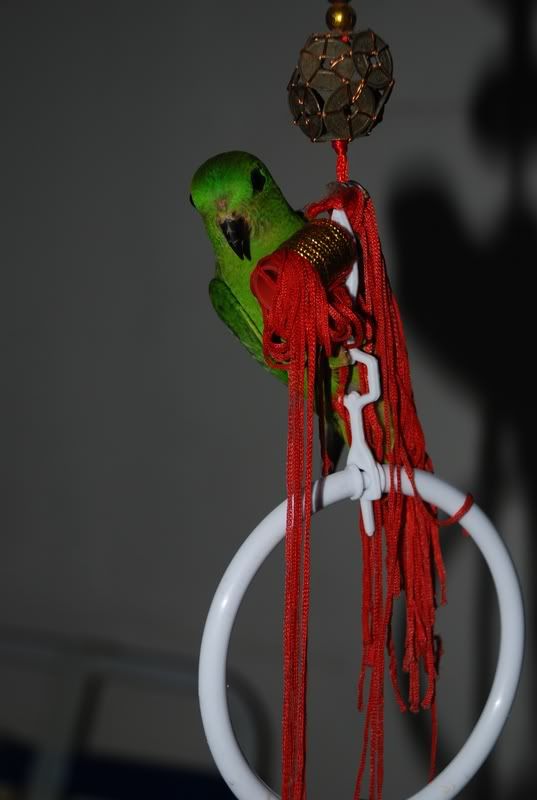
Rex, serindit saya.
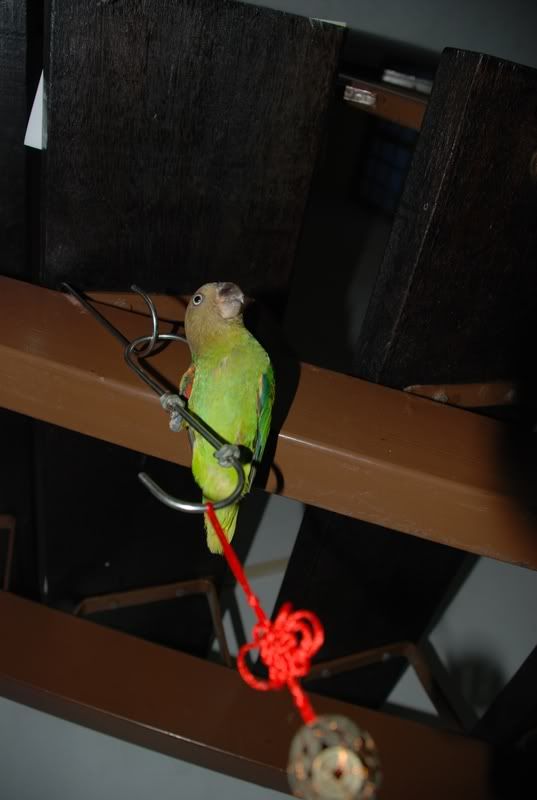
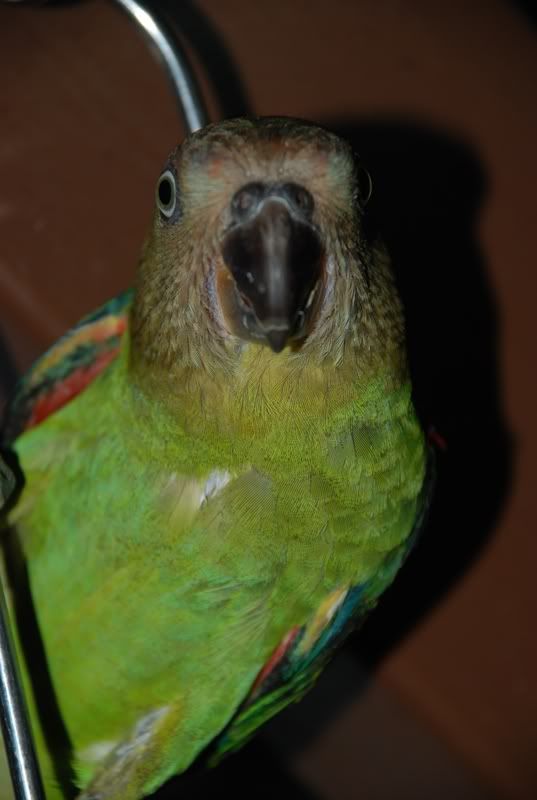
Kiki, puling betina. |
Rate
-
1
View Rating Log
-
|
|
|
|
|
|
|
|
|
|
|
Ini parrot saya yg terbaru. Species ini dipanggil Congo African Grey. Baru beli semalam.
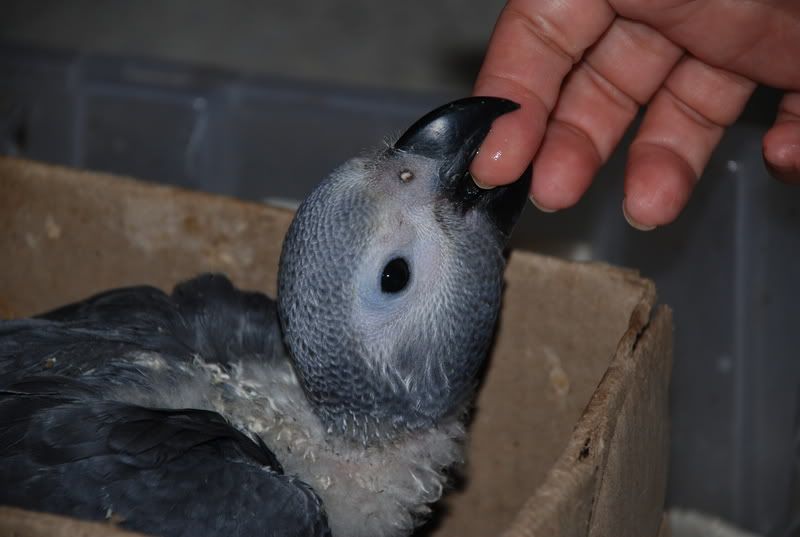
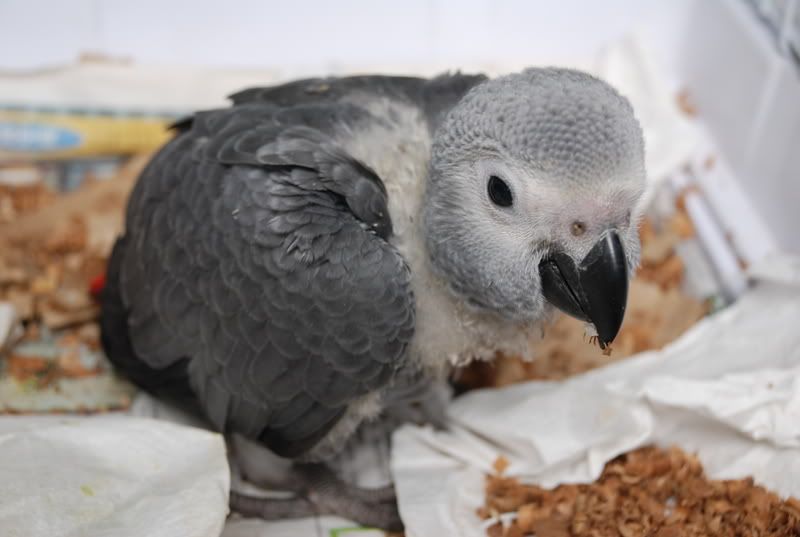
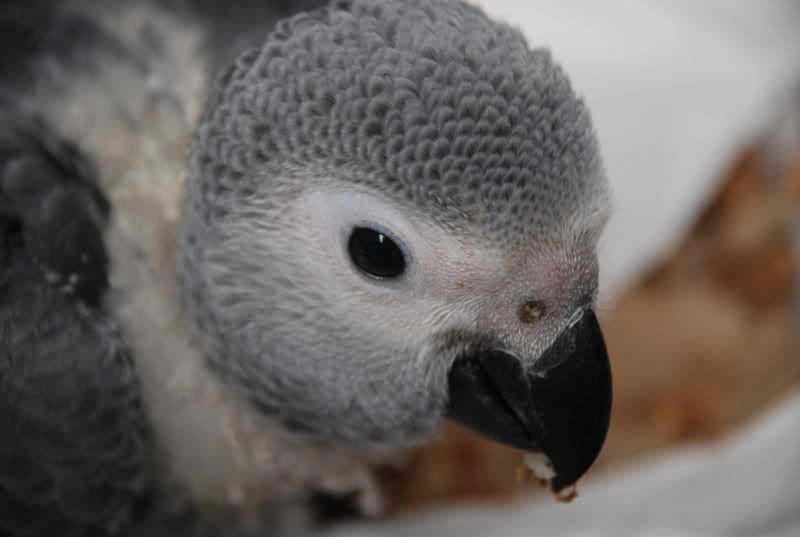 |
Rate
-
1
View Rating Log
-
|
|
|
|
|
|
|
|
|
|
|
Reply #18 SONofODIN's post
Parrot ni bebi lagi yeh..bape u beli ek?
and serindit you Rex and Kiki comelll sgt sgt!!
Lau mandikan serindit ni,pakai spray air tu jgk yeh?
(sbb me penah tgk my dad mandikan murai die camni..)
Serindit ngan parot ni mkn ape yer..
meh laa share cara2 penjagaan serindit ngan parrot ni yeh..
[ Last edited by ati1402 at 5-9-2008 09:03 AM ] |
|
|
|
|
|
|
|
|
|
|
|
Baby African Grey tu mahal, RM1,900. Kat kedai diorang jual antara RM2,500 ke RM3,000.
Saya beli dari breeder kat Penang. Dari Penang antar ke Kemaman kemudian ke kaki bukit Genting dimana saya ambik dari penjual.
Rex suka makan epal, pear, manggis, water chestnut, bird seeds, betik, carrot dan kuaci tapi dia tak tau kopek kulit kuaci macam parrot yg lain. Jadi saya kena kopek utk dia makan.
Puling jantan suka makan kuaci, bijirin oats, epal, pear, water chestnuts dan sayur. Yg betina tu susah sikit.
African Grey tu belum tahu makan lagi. Masih hand feeding dgn formula burung macam anak manusia makan nestum. |
|
|
|
|
|
|
|
|
|
| |
|